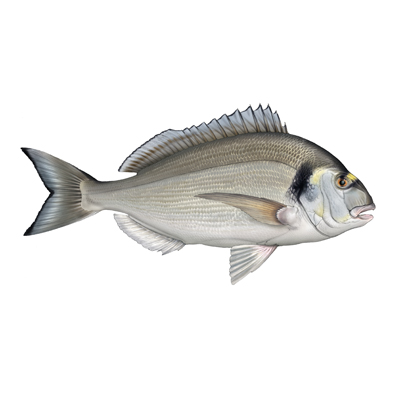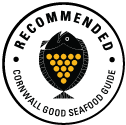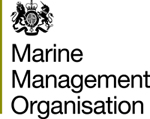

With a metallic sheen and a chunky profile the gilthead bream is an unmistakable fish that is caught by anglers and netters in Cornwall during the summer months and is highly prized.

Cornwall, ICES area VIIe-f
Handlining is a low impact and selective fishing method and in this case includes rod and line fishing.
Learn moreCornwall, ICES area VIIe-f
Gill nets are lightweight nets made of nylon (monofilament) fishing line that are anchored to the seabed and are used to catch fish by entangling the gills.
Learn moreCornwall Good Seafood Guide rates fish on sustainability using a scale of 1 to 5.
1, 2 and 3 are recommended, Fish to avoid are rated 5.
We use the system devised by the Marine Conservation Society (MCS) so our scores are comparable with the scores produced by MCS for the UK and fisheries from all around the world. For more information on scoring click here.
Very little is known about the stock of gilthead bream. Landings to Cornish ports by commercial fishing operations are less than 1 tonne per year.
Gilthead bream are most commonly caught by anglers and handliners but are also caught using bass nets in coastal and estuarine areas.






Cornwall Good Seafood Guide is underpinned by the Marine Conservation Society (MCS) Good Fish Guide. The first UK consumer guide to sustainable seafood. For more information visit www.fishonline.org
Cornwall Good Seafood Guide is here to help us all make sustainable seafood choices. Choices that will help us keep the oceans healthy and Cornish fishers' futures safe. This website is funded by Cornwall Wildlife Trust. If you would like to make a meaningful difference to the health of our oceans, please consider making a donation to the Cornwall Wildlife Trust Ocean Emergency fund. Your donation will help safeguard these remarkable environments, ensuring that they continue to thrive for generations to come. Together, we can be stewards of the seas and champions for a healthier, more sustainable future.